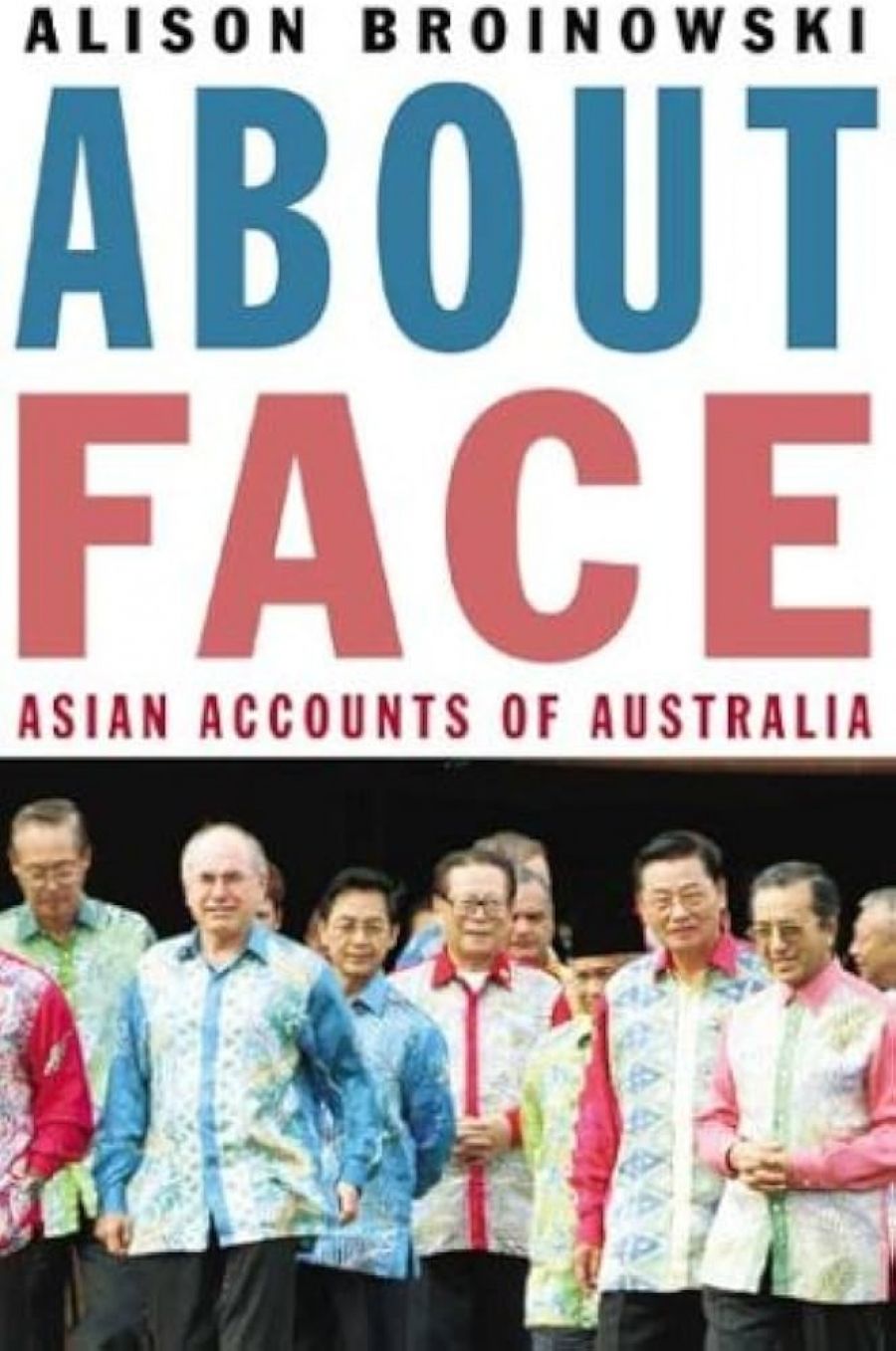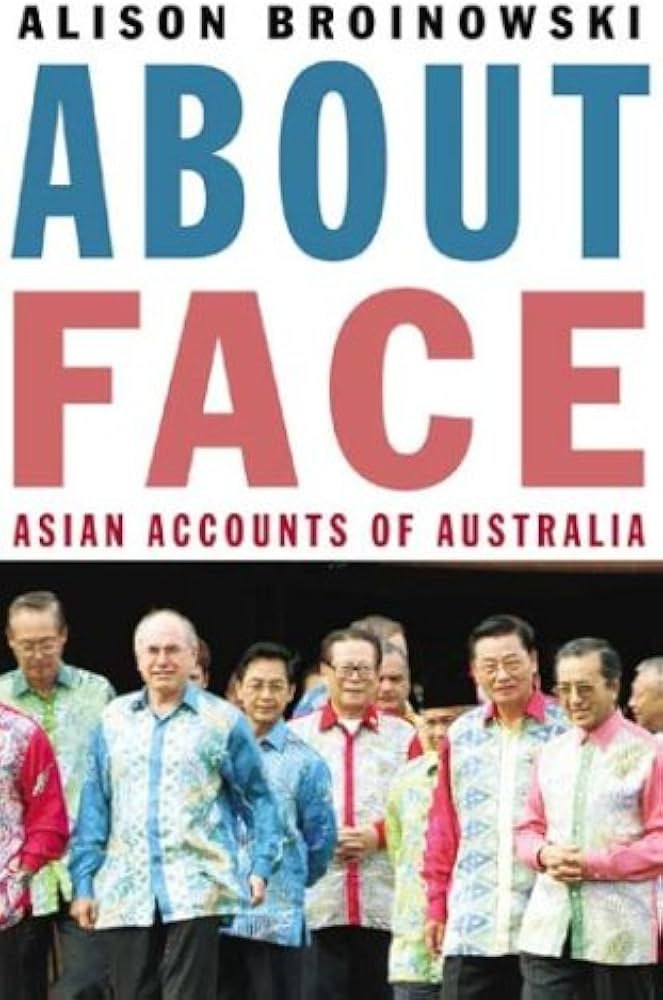
- Free Article: No
- Contents Category: Cultural Studies
- Review Article: Yes
- Article Title: It Takes Two
- Online Only: No
- Custom Highlight Text:
Alison Broinowski reviews the accounts of Australia offered over the last hundred-odd years by Asian ‘opinion leaders’ – generally Asian politicians and journalists – but also those within Australia, including the Chinese headmen or community leaders, Colombo Plan students, and Asian-Australian fiction writers. It is perhaps surprising that such a diverse group of commentators from ten Asian countries – divided into the more powerful and more distant East Asian countries of China (including Taiwan and Hong Kong), Japan, Korea and India, and the less powerful but more proximate South-East Asian nations of Indonesia, Malaysia, Singapore, Thailand, Vietnam and Philippines – has a constant refrain, albeit with contradictory undercurrents. The persistent themes are: Australia is ‘a physical space with a geography, but not … a mental space with a history or culture’, sometimes explained in terms of the convict heritage, and variously expressed in anti-intellectualism, simple-mindedness and stupidity; Australia is an economic failure, rich in natural resources but lacking the technology to develop these resources;(settler) Australia has always been White Australia, racist both in relation to indigenous Australians and Asians; Australia is a second-rate Western country, a ‘deputy sheriff’ or ‘dancing monkey’ to the United States, wanting to belong in Asia but not qualifying, although Australia’s aspirations are usually economically motivated; and Australia is marginal and irrelevant to Asia. ‘Australians seem more interested in “Asia” than “Asians” are in them’, even though Australians are accused of being largely ignorant about Asia.
- Book 1 Title: About Face
- Book 1 Subtitle: Asian accounts of Australia
- Book 1 Biblio: Scribe, $30 pb, 304 pp
- Book 1 Cover Small (400 x 600):

- Book 1 Cover (800 x 1200):

Variations on these themes include Australia’s lack of corruption, excellent social services and public amenities, which create dole-bludgers; a prejudiced and inaccurate media; social dislocation due to crime, drugs, gambling, immorality; sports-mad, inefficient, generous, undisciplined, legalistic, hypocritical, interfering, big, loud, exploitative, condescending, modest, humanitarian tendencies.
These Asian perceptions of Australia are a form of Occidentalism, caricaturing and stereotyping the ‘West’ as though it is homogeneous, and locating Australia as an inferior example. This occasionally descends into racism, when Asian leaders assert that no ‘pink faces’ will be welcome at their conferences. Given this Occidentalism, some Asians appear to harbour the very values they decry in Australians, for example xenophobia in China, Japan and Australia; resistance to ‘first nations’ within their nations in Indonesia, Malaysia, China, India and Japan; constructing ‘national ideologies based on identity, culture, and race’ in both Australia and Japan early last century. In both Malaysia and Australia, ‘personal and national self-regard are consistently more potent than “objectivity” in image formation’.
Asian accounts of Australia are explained as a combination of Australia’s ‘own behaviour, self-projection’ and dealings with Asian countries and ‘the interests of opinion leaders in those societies’ who deflect attention from domestic troubles by attacking Australia: ‘It takes two to identify.’ Australia is incompetent at the ‘Asia Game’ of putting competitors down, ‘which has been practised in Asian societies for centuries’. The latter chapters of the book turn to the ‘image war’ between Australian and Asian opinion leaders. Broinowski argues that, just as September 11 was of US making, the Bali bombing was of Australia’s own making, a retaliation for Australian involvement in East Timor and for Australia’s ‘ventriloquistic mouthing of Washington’s worldview’. So unsuccessful was Australia during the ensuing image war that the Indonesian media blamed Australians for the decline in tourism in Bali following the bombing. Jakarta managed to convince many in the region that Australia invaded East Timor and mistreated the local people, although ‘peace-keeping’ required Indonesia’s acquiescence to the Australian presence.
‘Australia, unable to shed its Western face or to leave its Asian place, and unwilling to accept its assigned rank-ing in the Asian hierarchy, makes itself the post-colonial scapegoat for Asia’s collective loss of face,’ Broinowski writes. The Asian region is a difficult place for Australia, given a history much more deeply embedded in European culture and traditions than is the case with the Asian countries of the region. Mainstream Australian values diverge from at least some of the values propagated by Asian leaders. For example, the ASEAN countries are committed to ‘non-interference in each other’s affairs’. Adherence to these principles would, presumably, have required Australia to remain aloof from the wars in Korea and Vietnam (which some of us think would have been a good thing), and to stay our hand in relation to East Timor and Irian Jaya (which some of us think would not be a good thing). While Broinowski warns that ‘Australia’s claim to have the right to override that [the principle of non-interference] will not soon be forgotten or forgiven’, I am not sure that Australia should commit itself always and everywhere to non-interference, especially if we claim that Indonesia ‘interfered’ in East Timor or Irian Jaya before Australia ‘interfered’ in Indonesia.
Perhaps even dearer to some Australians’ hearts is a history, if not a present, of creating: a ‘paradise for workers and for women’, as reported in Korean school texts; the only multicultural nation in the region, as opposed to being either a homogeneous or multiracial nation, a widespread desire to achieve reconciliation with indigenous Australians; and a commitment to human rights, freedom of expression and humanitarianism. These values are sometimes opposed to the ‘Asian values’ of communalism, reliance on the family and respect for leadership. In claiming the former set of values, Australia makes a soft target when we are accused of being racist or intolerant. We can hardly call for Asian leaders or journalists to hold their tongues when we support robust exchanges of views. But Broinowski sometimes forgets that the Asian leaders are not necessarily proclaiming their own racial tolerance just because they attack our supposed lack of it. On the other hand, it could be claimed that, if Australians do not note the racism in Asian countries, we engage in a sort of reverse racism whereby we assert our superiority – our greater tolerance and understanding of the racism of the formerly oppressed.
Broinowski notes Australia’s differences of opinion with Asian leaders and its criticism of Japan’s ‘scientific’ whaling in which Japan is ‘catching two or three times as many whales as it reported’. I do not know the truth of the matter, but the sophisticated Japanese propaganda/information on the whaling issue makes a case for the reintroduction of regulated whaling that cannot easily be dismissed with ‘Australians who object to Japan’s “scientific” whaling are told they are culturally insensitive’ (actually we are also told that we are refusing the scientific evidence concerning increased numbers of at least some species of whales and the lesser environmental destruction that comes from eating whales as opposed to beef).
Against the difficulties of these enduring differences between ‘Asian’ and ‘Australian’ values, Broinowski recommends that ‘Australians behave as equals’. Australia should take seriously the need to invest in disseminating positive information about ourselves, instead of virtually closing down Radio Australia and selling the Cox Peninsula transmitter to a fundamentalist Christian group. ‘The gridlock of prejudice in Australia and the region can only be broken by making Australia more useful, interesting, and relevant to countries in the region,’ she declares.
This is an ambitious and provocative book. While I suspect that there has been a certain levelling of the Asian images of Australia to achieve coherence in the argument, this detracts only in a small way from a book that throws down the gauntlet to Australians and our leaders. If we had developed and pursued intelligent, independent, and well-resourced foreign policy and cultural relations with our Asian neighbours, would the Bali bombings have been avoided?


Comments powered by CComment